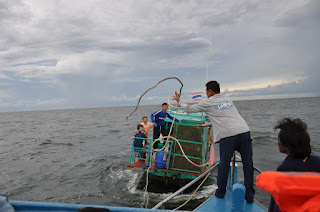A key element of sustainable living today is educating yourself about the important issues of the day. This in mind, I’ve always been a fan of those campaign-style documentary films. Some, like Al Gore’s Inconvenient Truth, work well globally. However, with so many of these ‘stupid-white-men supersize-me’ type films originating from the U.S., I’m often left with the question of whether things are quite the same elsewhere in the world. Globalisation means that events in one community may well have affects on the other side of the globe. Therefore, in a sense, these films are relevant everywhere. But we should not ignore more local contexts which may shape the issues in unique ways.
So, I was interested to discover that the Sasin Centre for Sustainability Management at Chulalongkorn University regularly screens ‘issues’ films accompanied by panel discussions, attempting to make links to the Thai context. The Sasin Centre is a business school that focuses on combining sustainable development with corporate social responsibility and His Majesty the King’s sufficiency economy philosophy. The last screening was of Robert Kenner’s Food Inc. (2008) which dissects industrial food production in the US and argues that it is unhealthy for the consumer, environmentally harmful, and abusive of employees and animals.
It is a convincing film which left me less than comfortable as well as wondering, ‘What about Thailand?’ After the film, panel-guests with an interest in the Thai food industry were introduced, and a brief but fascinating Q & A session followed. The panel included Bill Marinelli, a ‘seafood guru,’ Dylan Jones, chef and founder of Bo-Lan restaurant and Charkrit Direkwattanachai of Tesco Lotus.
And what was there to say about issues of food and sustainability in Thailand?
The first question was whether Thailand has similar problems to those highlighted. Answers ranged from Marinelli’s optimistic view that Thailand is in a fortunate position and still has time to learn from and avoid US mistakes, to Dylan’s comment about the lack of questioning of food production and the issues around consumer information: reminding us of the absence of labelling in our soi food. Direkwattanachai felt that individual eating habits are key to tackling the problems, and outlined a series of measures Tesco were taking to promote healthy lifestyles and provide consumers with information. Asked to comment on how Thailand might move forward, the panel saw awareness raising amongst consumers and subsequent use of purchasing power as crucial.
The idea that consumer purchasing power can curb undesirable trends in industrial food production was an echo from the film. Essentially, if we demand more sustainable options by choosing carefully what we buy, the supply side of the market will respond and food production will change accordingly. To this end, stalls showcasing organic and slow food products were set up at the event, allowing the audience to exercise their own purchasing power. I ‘did my bit’ by leaving with a kilo of fragrant passion fruit and a jar of coffee blossom honey.
The stalls illustrated the opportunities for some folks in Bangkok to choose to step a little way out of the industrial food system. Delicious fruit and honey, but this consumer-driven approach is dependent on accurate, transparent information about the foods on offer. Although the panel did touch on this, questions remain for me around the labelling of products we buy in Thailand. I've noticed a whole array of 'organic' logos on products available here. What do these labels actually mean? What obligations does Thai law put on companies to provide information needed to make more sustainable choices? How can the public get answers if the information provided is unclear?





